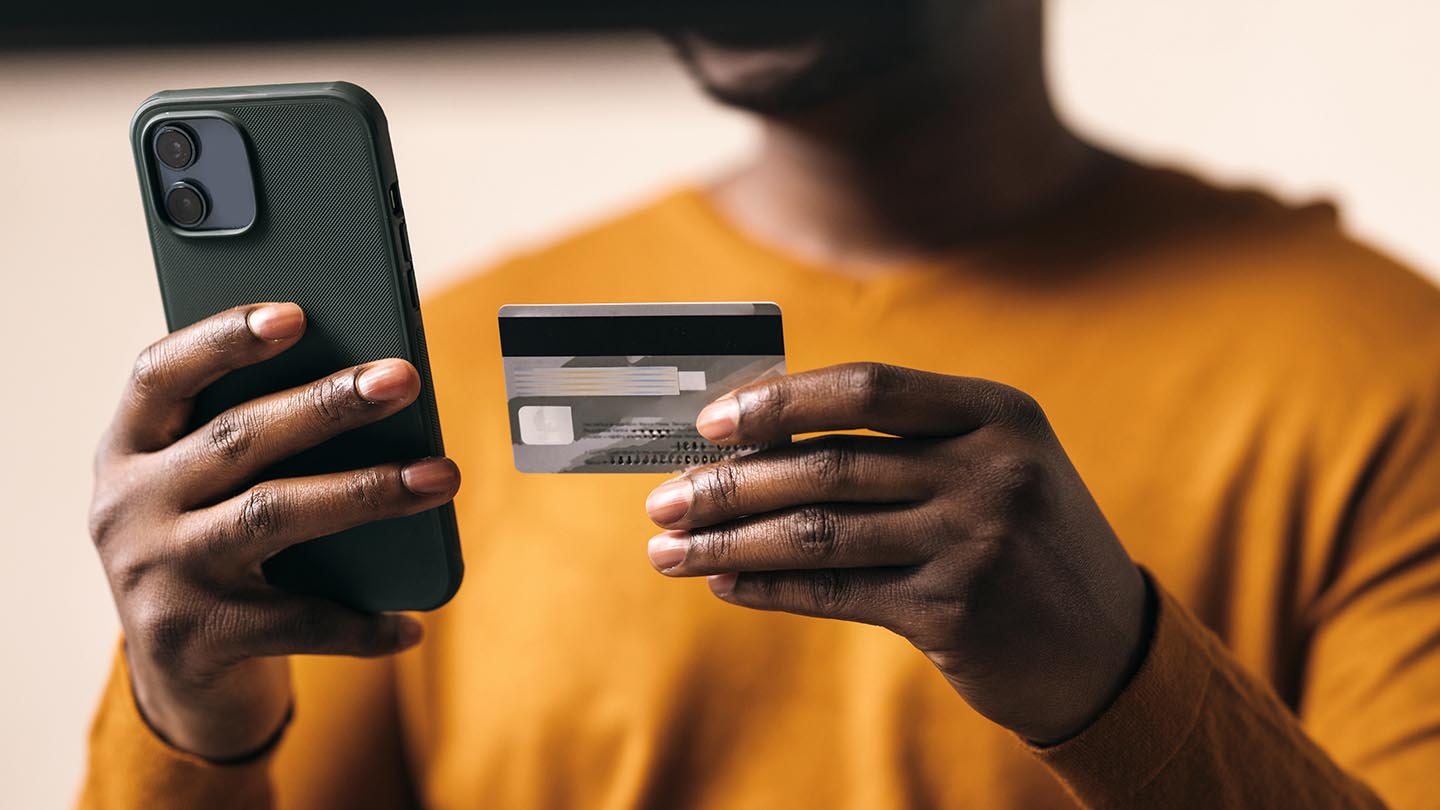
The acceleration of technological change, combined with a number of profound shifts in consumer society, is re-shaping the world. The evolution of commerce will be flexible, convenient and hyper-personalized, and it will seamlessly switch between both physical and digital spaces. At the heart of commerce, however, there will always be an exchange of value. Yet in the coming years, this exchange will present itself in many new ways, beyond a simple transaction. Retailers and brands are redefining shopping experiences to make them more exciting, social and meaningful so they can create new forms of value for their customers. A key enabler of this transformation will be payments, which are having a growing influence at every touchpoint in both the customer and business journey. From contactless transactions to purchasing digital assets in virtual worlds to displaying real-time pricing based on inventory levels and the fluctuation of material costs. Join us as we explore some of the key forces shaping the world of personalized commerce.
Retail
As technologies converge and consumer behavior changes, the lines between e-commerce and brick-and-mortar retail are continuing to blur.
Consumers are increasingly favoring integrated experiences that encompass both physical and digital touchpoints. A simple example is ROBO, where shoppers research a product online but want to buy it in-store or offline. As digital technology evolves, the way these two channels interact is becoming more innovative. One area of development is check-out free retailers, which are leveraging advanced biometrics, embedded finance and sensor technology to create super-flexible and convenient shopping experiences. In the coming years, a customer could simply scan a palm or use facial recognition when entering a store. This would instantly confirm their identity and link them to their online account, allowing instant payments, with no need to take out a card or other method. As they browse the aisles they can select items from interactive digital displays, which offer near endless product choices. This links with the rise of online marketplaces as the dominant force in the e-commerce space, due to the sheer breadth of options they offer across all different sectors. Being able to offer this type of limitless experience in a physical space could be an exciting development.
That’s largely due to the significant revenue that physical stores still contribute to the bottom line. For instance, Target fulfills 96% of its sales in physical stores, with only 19% of its revenue originating on digital platforms.
Some digital opportunities to enhance physical experiences include audio-visual storytelling and virtual assistants to guide the customer through the shopping journey. This ties into the idea that all brands are now essentially media companies that must produce high-quality content to engage and entice their customers and make them want to be part of their universe.

“Your consumer is your collateral. How can you keep them loyal? The best platforms make it so easy to get almost anything.”
Jennifer Acosta
Global Head of Media and Telecommunications, J.P. Morgan Payments
The ultimate goal is to create retail spaces that are centered in experience rather than just transactions. This is especially important for younger generations. According to PWC, 50% of shoppers under 35 would be willing to pay more for an enjoyable shopping experience.ii One opportunity for these experiences is in physical stores.
These types of retail and leisure destinations will increasingly be powered by hyper-personalization. Customer data – gathered from online devices, RFID or geo-positioning beacons – can be used to create unique and curated shopping or leisure experiences for everyone.
Key takeaways for merchants and suppliers
- Many consumers expect the same experience of personalization that they gain in digital channels to transfer into physical.
- For instance, consumers want to endlessly browse products, and receive relevant recommendations based on past purchase histories.
- Businesses can incorporate these elements into their physical experiences through endless aisles that offer personalized discovery based on technology that identifies the preferences of the user.

“Products are replaceable. Experiences are irreplaceable. 40% of consumers don’t care where they buy products, so you have to offer them something unique.”
LUCIA LI
GLOBAL PAYMENTS ADVISORY CONSUMER AND RETAIL
Social
Commerce is intimately tied to the social zeitgeist. As a new generation of shoppers comes of age, with different values, concerns and preferences, this is having a major impact on the retail experience.

For consumers such as Gen Z (those born between the mid-90s and 2010) there are some notable differences when compared to other generations. For instance, younger cohorts of shoppers are more concerned with ethical consumption. Three-quarters (75%) of Gen Z consumers say that sustainability is more important than brand names when it comes to purchasing decisions. iii Gen Z also places a greater focus on individuality and identity. To connect with this generation and build loyalty, brands have to make sure that they are able to represent them and speak a language they understand, especially around areas such as gender expression, which are becoming more nuanced. Authenticity is the currency of the day and modern brands and retailers must also act as cultural centers, especially with the ease in which consumers can interact, form groups and share passions online.
One of the major trends at the moment is social commerce. Nearly all (97%) of Gen Z shoppers use social media as a source of inspiration. iv Apps such as Instagram and TikTok, as well as Asian powerhouses such as Douyin (the sister app of TikTok) and WeChat, are becoming more popular than traditional search engines when it comes to searching for product ideas.
Livestream shopping – where influencers, celebrities or brand employees review and sell products live on social media channels – is also growing in popularity and is already worth more than $20 billion a year in the US, with notable platforms including Whatnot and NTWRK. TikTok is also looking to launch in this area. In China, the sector is worth 20 times as much, v which gives some indication of the potential. Taobao Live, part of e-commerce giant Alibaba, is the leader and is currently used by almost 70% of consumers.

“Integrating payments can enhance the experience being created making it seamless, fun and memorable!”
Manish Jain
GLOBAL HEAD FOR CONSUMER & RETAIL INDUSTRIES
Whether it is livestream selling, producing social media content, or designing digital goods, the creator economy is now worth more than $100 billion per year, having doubled in the last three years.vi This is also resulting in the development of new payments structures. For example, micro-transactions, where people can easily tip their favorite creator, are becoming more popular. Platforms are also looking into revenue-sharing models with influencers, or instant payouts for creators, to help them access their earnings more quickly. They are also developing exchanges so brands can connect directly with influencers to arrange advertising tie-ups.
Meanwhile, younger generations are also gravitating towards immersive technologies such as virtual reality (VR) and augmented reality (AR). These can upgrade the retail experience further by allowing consumers to try on clothes or make-up via digital overlays, customize products or place furniture items in 3D representations of their homes. The VR facilities in a store could also provide games and experiences to keep people active while others in their group shop. This ties in with the idea of shopping as play, with brands using gamification to increase customer interest or to provide novel ways for them to earn loyalty points and rewards. Imagine a sports store allowing customers to play rounds in an ultra-realistic golf simulator, with in-experience purchase available. If they like the swing of a club then they can instantly order the thing in real life, or they could earn prizes, tokens and discounts based on their play.
Key takeaways for merchants and suppliers
- New generations of consumers are seeking in-person experiences that replicate many of the aspects they view and engage with on social media platforms and livestreams.
- Innovative brands are leveraging trends in augmented reality and virtual reality that offer benefits to customers, such as trying on clothes and beauty products before purchase.
- Businesses can apply the lessons learned from this trend into their physical stores through creating extended reality labs, which bring the best of virtual experiences into retail spaces.
Environment
With 75% of U.S. consumers concerned about the environmental impact of the products they purchase,vii conscious commerce is one of the most powerful drivers.
The growing influence of sustainability on consumer buying decisions is resulting in the rise of the circular economy, where goods are increasingly re-used rather than thrown away. The fashion industry, in particular, is seeing massive growth in re-commerce sites, which allow consumers to buy, sell or exchange pre-used clothes and accessories. This is in part due to the perception that the fast-fashion trend – where brands mass produce low-cost clothes in response to new trends – is harmful to the environment.
As Adit Gadgil, Global Co-Head of e-Commerce & Technology, Media & Telecoms, J.P. Morgan Payments, explains:
“Ethical commerce is growing in importance. When someone buys something, they want to know what the origin story is, did it come from the right sources, did people along the way get a fair share of the value created.”
Adit Gadgil
Global Co-Head of e-Commerce & Technology, Media & Telecoms, J.P. Morgan Payments
The zero-waste movement is also expanding in the grocery sector, as surplus produce or disposable items such as coffee pods that would have been thrown away are now being re-packaged and sold direct to consumers. Meanwhile, in the EU “right to repair” legislation requires that electronic goods be repairable for 10 years to prevent unnecessary wastage. This is an example of how the push towards greater sustainability is not just being driven by consumers. Growing regulation and scrutiny from governments is demanding that companies take concrete action to reduce carbon emissions and mitigate their environmental impact. Meanwhile, asset managers are using environmental, social and governance (ESG) metrics in their frameworks, which could starve companies of capital if they do not make progress in these areas.
And it is not just producers of physical goods that must take note. Digital sustainability is also a crucial topic as tech companies evaluate the energy usage for data centers or for mining cryptocurrencies. The huge computational power needed to run the latest generative artificial intelligence (AI) applications has bought this into stark relief.
However, the trust gap between consumers and brands is growing, with many companies suspected of “greenwashing” or overstating their environmental credentials. As a result, brands must prioritize sustainability where possible but refrain from overpromising in this area.
Key takeaways for merchants and suppliers
- Shoppers care more about sustainability than ever before, to the extent that they’re specifically purchasing products that minimize environmental impact.
- As a result, consumers want to extend the longevity of products purchased.
- Businesses can respond through the creation of responsible upcycling stations, which allow consumers to alter, transform or exchange products to lengthen usability and minimize waste.
Technology
As brands begin to leverage Web3 technologies such as blockchain, artificial intelligence and virtual reality, the world of commerce is fundamentally changing.

Generative artificial intelligence (AI) that can produce high-quality content – including text, audio, images and video – has been in the headlines recently with concerns around safety. vii ChatGPT, which was launched by the OpenAI initiative, can provide detailed and fluent answers to even the most complex text queries. Google has also developed Bard, a powerful natural language AI chatbot. Many companies are already using AI technology for creative tasks. Fashion companies are launching AI-generated clothing designs, while others are experimenting in areas such as writing scripts, producing journalism and making visual art – Midjourney is a program that can generate photorealistic images from textual descriptions.
AI could also offer a new generation of creators' low-cost ways to produce goods, helping to diversify the retail landscape. Considering that technologies such as additive manufacturing and direct to garment (DTG) printing, are also growing in sophistication, we could see the rise of “one person factories”, with individuals able to compete with much larger organizations, at a fraction of the overheads. Or imagine a retailer that allows you to design a product, such as some sneakers or a pair of jeans, from scratch in the store, via a 3D screen or AR application, and have it physically produced while you watch or shipped home to avoid the wait. With automation and production techniques such as 3D printing, bespoke buying, with items created on-demand for each customer, is now a reality.
“Pay by biometric is becoming increasingly relevant, especially as so much of commerce is now done via screens.”
Grace Wee
Payments Innovation Product Manager, J.P. Morgan Payments
Another major area of growth is the production and distribution of digital goods, such as art works, in-game items or clothing for use in virtual worlds. It is estimated that the global market for non-fungible tokens (NFTs) will reach $200 billion by 2030.viii Mainstream brands will increasingly create and distribute digital products, often collaborating with the new generation of online creators. AI will also shape the shopping experience in other ways. As virtual assistants become more sophisticated, they may become the main way that people interact with the online world. They will be able to provide accurate product recommendations based on detailed knowledge of the user’s experiences and preferences. In-store AI assistants may be used to guide shoppers around a retail space providing both a personalized experience, as well as persuasive product pitches.
The converging trends of AI and personalization will rely on the capture, processing and analysis of huge volumes of consumer data. As a result, discussions over consent and the sharing of data will likely become more pronounced, with stricter regulations and safeguards potentially limiting some use-cases. One area that could be particularly affected is biometrics. In many Asian countries, facial recognition is already a common way to pay in stores. Yet, “smile to pay” systems have yet to take off in the West, as people are concerned about customer privacy and the risk of identity theft or misuse. Biometrics provide quicker transactions, greater convenience and improved shopping experiences. The next step for many Western brands will likely be palm scanners or voice recognition, as shoppers gradually become more comfortable with these approaches. And as this new technology rapidly deploys, trust and safety will continue to be a top priority for merchants, suppliers, and consumers alike.
Key takeaways for merchants and suppliers
- Modern shoppers want to create customized products and access exclusive designs from both brands and creators.
- Innovations in AI and 3D printing make it easier for consumers to tailor products around their needs and share them with others.
- Businesses can allow consumers to customize a basic design around their preferences and submit it for others to see through digital co-creation marketplaces, based in physical stores.
Markets
It seems that just as one political or economic upheaval ends, the next one starts. We are living in an age of rapid change and market dynamism.
All brands in the current operating environment must be comfortable with “certain uncertainty,” or the idea that although we do not know what the next disruption will be, we know that disruption is coming. This is partly due to the rise of globalization over the past three decades, which has resulted in highly interconnected supply chains, financial systems and labor markets. Unfortunately, this also means that major events in one part of the world are rarely contained and can quickly have global impacts. This affects commerce in many ways. The threat of disrupted supply chains means that companies are looking to vertically integrate once more and bring manufacturing closer to home. This is aided by the fact that advanced automation now means that re-shored factories can be cost-competitive. Another approach is “friend-shoring” in which brands source commodities and components from geopolitical allies, in case a conflict results in trade embargoes.
The result for brands is higher input costs and a greater focus on resiliency at the expense of market efficiency. For the consumers, market volatility can reduce or alter buying behavior. The aftermath of the 2008 financial crisis saw the rise of the sharing economy, allowing people to monetize assets such as spare rooms or their vehicles to earn extra cash. For businesses that have offshore manufacturing plants they investigated sourcing to small-to-medium businesses (SMB) as a new revenue stream. In the current period, which has recently seen spiraling energy costs and inflation, we are seeing a greater shift towards re-commerce, especially for higher-end goods such as electronics and branded clothes, as consumers become more budget conscious. There is also a rise in the lease economy, with people looking to rent items such as cars or furniture rather than buy them outright. This is because in times of uncertainty, people value flexibility and will pay more in the short term so long as they have the option to cancel. But this mindset can also cause some problems.
As Petra Gillis, EMEA Solutions lead Consumer Goods & Retail, J.P. Morgan Payments, says:
"With one brand, customers started getting five pairs of sneakers on ‘buy now, pay later’, only to hold onto one and take back four pairs to the store. This resulted in an increased volume of returned items and a massive problem with reconciliation."
Grace Wee
Payments Innovation Product Manager, J.P. Morgan Payments
The desire for flexibility is also fueling the ongoing push towards subscription models. From news media to coffee to cars, it seems everything is now available on a subscription basis. For brands, this will mean adapting their systems to be able to take recurring payments without adding friction into the consumer journey.
Key takeaways for merchants and suppliers
- Consumers must make more conscious purchasing decisions than they have ever had to before due to political and economic uncertainty.
- Meanwhile, businesses are often faced with prioritizing one of two pricing strategies. They can raise prices to combat inflation, raw materials and inventory shortage, or they can maintain prices and rely on customer loyalty to weather the storm.
- Both factors can be considered through dynamic product pricing, which supports real-time price adjustments in addition to transparency with consumers about what’s driving pricing changes.
The potential trends and solutions in this article represent possible future state commerce technology solutions and are not product offerings of J.P. Morgan Chase Bank, N.A., or any of its Affiliates.
References
PYMNTS, March 2022. ‘96% of Target’s Q4 Sales Fulfilled in-Store, Retailer Invests in Ease and Convenience.’ Available at: https://www.pymnts.com/earnings/2022/96-percent-target-q4-sales-fulfilled-in-store-retailer-invests-ease-convenience/ Accessed March 2023.
PwC, May 2021. ‘New research challenges assumptions of younger consumers and discovers polarised perceptions of targeted advertising.’ Available at: https://www.pwc.co.uk/press-room/press-releases/new-research-challenges-assumptions-of-younger-consumers.html. Accessed March 2023.
Sustainabilitymag.com, July 2022. ‘Gen Z generates demand for sustainable supply chain practice.’ Available at: https://sustainabilitymag.com/supply-chain-sustainability/gen-z-generates-demand-for-sustainable-supply-chain-practice. Accessed March 2023.
Forbes May 2021, ‘Gen Z And The Rise of Social Commerce.’ Available at: https://www.forbes.com/sites/forbesagencycouncil/2021/05/17/gen-z-and-the-rise-of-social-commerce/?sh=371a1a43251d. Accessed March 2023.
Digiday, February 2023. ‘How agencies are testing live shopping and seeing potential in accelerating conversions.’ Available at: https://digiday.com/media-buying/how-agencies-are-testing-live-shopping-while-seeing-potential-in-accelerating-conversions/. Accessed March 2023.
China Briefing, September 2022. ‘China’s Livestream Industry: Market Growth, Regulation, Enabling Technology, and Business Strategies.’ Available at: https://www.china-briefing.com/news/chinas-livestream-industry-market-growth-regulation-enabling-technology-and-business-strategies/. Accessed April 2023.
Sustainable Brands, September 2022. ‘Majority of US Consumers Say They Will Pay More for Sustainable Products.’ Available at: https://sustainablebrands.com/read/marketing-and-comms/majority-of-us-consumers-say-they-will-pay-more-for-sustainable-products#:~:text=75%20percent%20of%20US%20consumers,this%20jumps%20to%2075%20percent.
Grand View Research, April 2022. ‘Non-fungible Token Market Size Worth $211.72 Billion By 2030.’ Available at: https://www.grandviewresearch.com/press-release/global-non-fungible-token-market. Accessed March 2023.
Stay Current
Hide
Stay Current
Hide







